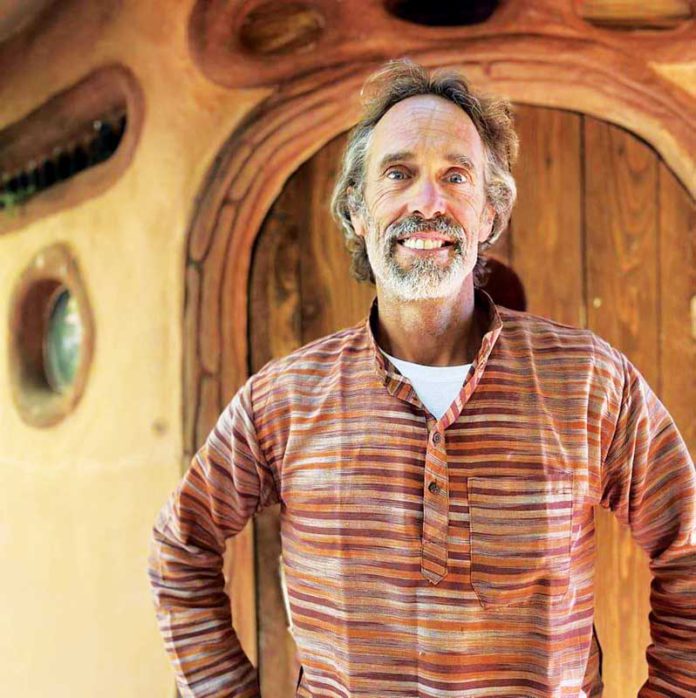Miguel Elliott of Petaluma’s Living Earth Structures suggests that our love of land and the housing crisis intersect in “cob.”
Cob is a natural compound of clay, sand, straw and water that has been used time out of mind to build structures that can last a thousand years. Cob turns our land into an unlimited sustainable building material. The only problem is that it is not yet legal for habitation in California.
Cincinnatus: How do you know when the cob mixture is right?
Miguel: I know it by feel, but there are various tests. If you shake the cob in a water-filled mason jar, sand and clay will separate. You generally want 70% sand and 30% clay. Chopped straw is added for tensile strength. Straw’s known as “the rebar of natural building.”
CH: Can it stand up to earthquakes?
ME: There is a group called The Cob Research Center in Oakland, working to make cob fully legal. They have developed a cob building code that is up to international standards of earthquake safety.
CH: What keeps it from washing away?
ME: A lime plaster. As lime is fossil shell, you are literally putting it in a protective shell.
CH: It’s white, like those beautiful white-walled thatched cottages in Ireland and Normandy.
ME: Yes. Though I usually build a wood and cob “living roof” of succulents and eatable plants.
CH: How does cob do in a fire?
ME: Fire makes a cob structure stronger and more water resistant. It turns it into a ceramic.
CH: Wow, like firing a pot. Compare that to conventional structures that light up like toxic tinderboxes. That sells cob for me. But you say it is not yet legal to build cob mansions or apartments?
ME: At present, it is only legal to build non-inhabited structures like sheds and meditation huts. It’s because the California building commission is controlled by corporate interests.
CH: You’re in your Robin Hood era.
ME: Yes, but I am hoping to organize and teach people cob with work-trade parties that eventually build a structure on each laborer’s property. I helped initiate such a movement in rural Argentina. They eventually got the law changed.
Learn more: This is taken from a longer audio interview available at ‘Sonoma County: A Community Portrait’ on Apple, Google and Spotify podcasts. linktr.ee/cincinnatushibbard.












I’m interested in contact info for Miguel Elliott about cobins for the homeless. Thank you